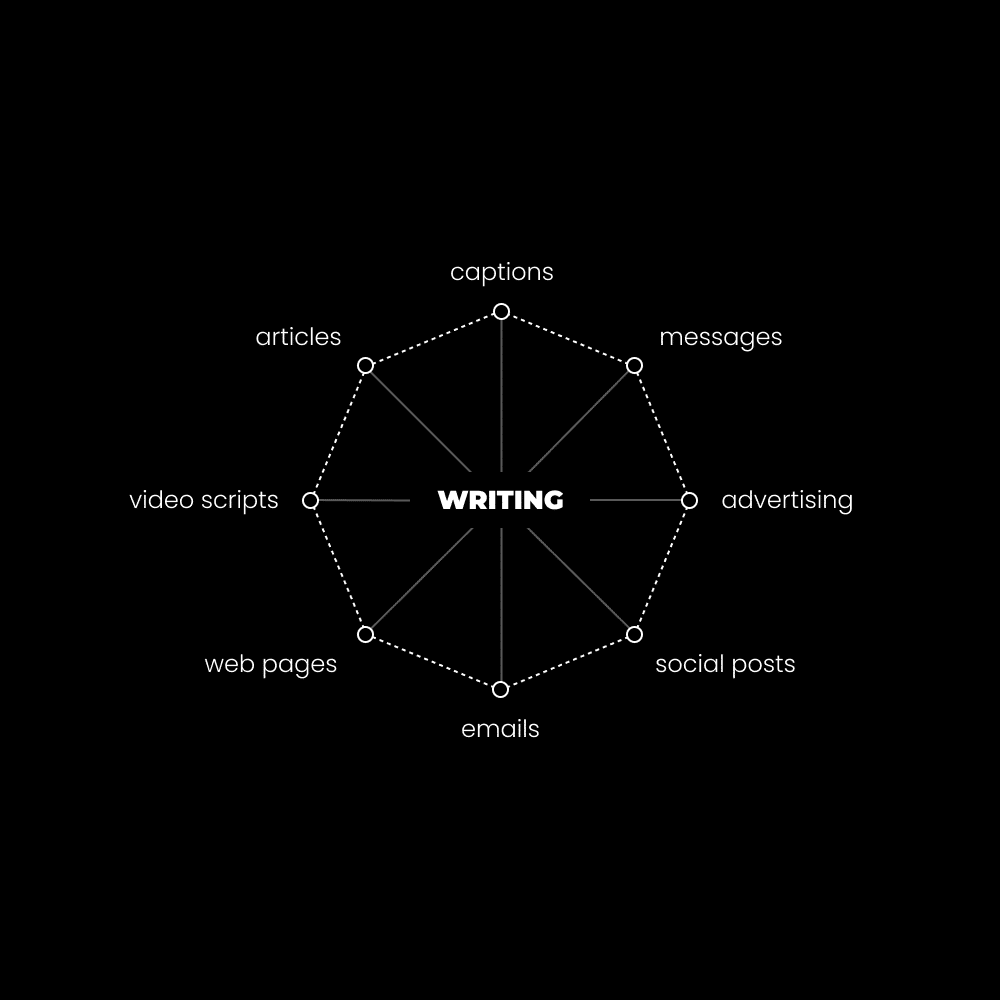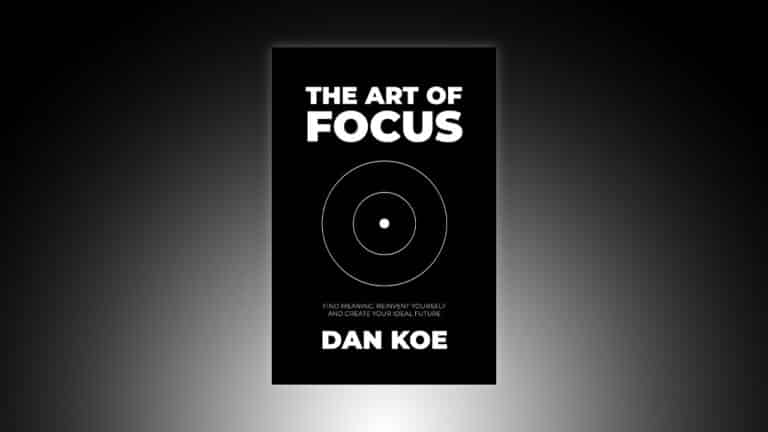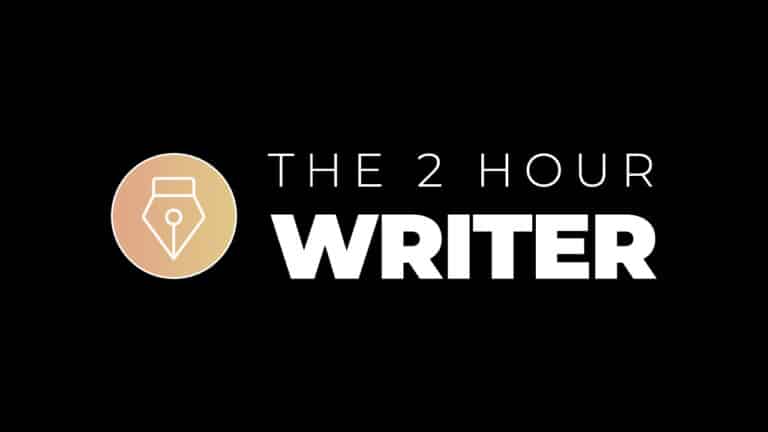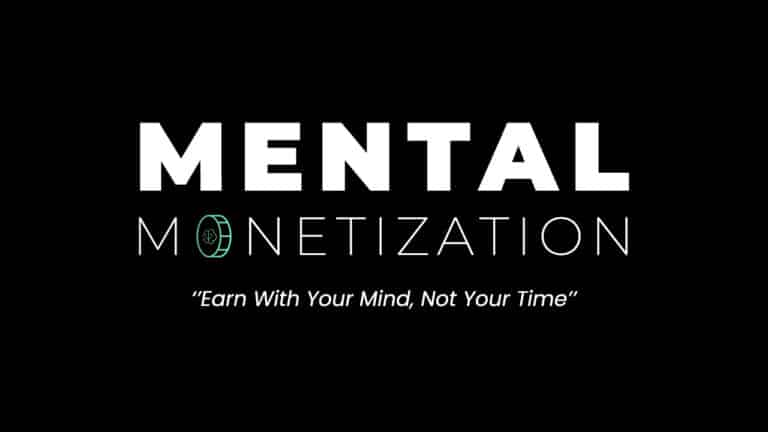Ever since I can remember, I’ve had the goal of doing what I love for a living. Isn’t that what everyone wants?
My family, teachers, and even the people I was following online screamed at me to go down other paths.
So that’s what I did.
- Went to college (and didn’t finish after 5 years)
- Learned creative skills on the side
- Started every online business imaginable
- Learned to code because it was “lucrative”
- Dropped out of college because it was wasting my time
- Got a $55K/year job as an entry level web developer at a design agency
Throughout this entire journey, my dream of “doing what I love” stuck in the back of my head. I was constantly reminded of it. There wasn’t a single moment from age 16-25 where I wasn’t working on a meaningful side project.
I still maintain this habit to this day. If it isn’t a business project, it’s a health project.
This is how I get out of a rut, because the only reason I fall into a rut is psychic entropy, the mind tending toward disorder. Meaning I don’t have a goal, project, or priority to bring my focus to.
My current projects are Kortex (second brain software), Kortex University (a school for creators), promoting my book, planning another book (to write in Kortex), and gaining a few more pounds before I trim down for the warm seasons.
Why am I telling you all of this?
Because I realized most people didn’t know what they were talking about.
I was taking career and life advice from people who hadn’t achieved what I wanted to achieve. In their closed mind, the reality I wanted to create was impossible, yet I kept looping back to projects that I loved working on for the sake of maintaining my sanity.
Most people don’t have a personal project that will create the future they want.
Most people don’t realize a personal project is not optional to create the future they want.
The only other option is to live by your programming, pursue the goals that society set for you, and work on the projects that lead to those goals. If you don’t spend 1 hour building your dreams, you will spend 8 hours building someone else’s, for life.
10 years ago, my mindset was: “If I can monetize any of these passion projects, I’ll be set. All I need to do is learn and build until one works. I need to increase my capacity for luck with skill acquisition and experience. It may take 10 years, but some people go to school for 12. Even if I fail I’d be in a similar position.”
After years of trial and error with every “marketable skill” that people tell you to learn, I found the secret.
Well, not really a secret, but I’m supposed to make you curious to read more ya know.
Before we begin:
This one is going to be long. Make sure you have the bandwidth and time to read it. I promise it will be worth it.
Aside from that, another reminder that The Art of Focus (my book) is now available on Amazon in Kindle, audiobook, and paperback.
Why Writing?

The future of media is decentralized.
People are and will continue to turn to:
- Social media for news
- Courses for education
- Creators for knowledge
I don’t want to hear about AI disrupting writing.
I see it as an impossibility that the only thing we consume online is created by a robot without a soul.
The emergence of AI seems to favor human creativity, and media is the vessel for front-end creativity.
AI is a tool for writers to become more prolific.
Writing is the skill that breathes life into any other skill you learn.
It is the meta-skill that people avoid learning until they are forced to (because they need to survive).
They don’t see it’s importance because it’s “just plain old writing, who needs to learn that?”
There was a reason I failed at almost every business model I tried.
Digital art, SEO, Facebook ads, dropshipping, e-commerce stores, and more.
I was so focused on learning the skill and building a website that I forgot I actually had to get customers at some point.
How do you get customers?
Writing.
Content (or media) is the front end of the internet. It’s how you capture, hold, and convert attention in a sea of self-deprecating memes and valueless content.
The foundation of content is writing.
- Tweets? Writing.
- Threads? Writing.
- Newsletters? Writing.
- Blog posts? Writing.
- Cold emails? Writing.
- Social media captions? Writing.
- Landing pages? Writing.
- Product descriptions? Writing.
- Course modules? Writing.
- Client communications? Writing.
- Customer resources? Writing.
- Ads of any form? Starts with writing.
- YouTube videos? Done best with written scripts.
- Instagram reels and TikToks? Like reading well-written tweets.
- Images on Instagram? Usually designed from a well-written quote or saying.
- Any other form of online marketing, advertising, or entertainment? Starts with writing.
Everything that your audience, customers, and network see starts with writing.
Don’t underestimate that power.
Every single person in business is a writer at their core, they just don’t label themselves as that.
There’s a reason I can outperform every dude with six pack abs in terms of engagement and follower growth on Instagram.
High-impact digital writing.
Not technical or academic writing.
I’m not here to teach you how to write a research paper. I’m here to teach you how to write in a way that lets you live the life you want.
If you want to become a master of content (and leverage no-code tools to distribute your writing and attract an audience) it’s pretty clear that writing needs to be the foundation of your one-person business.
6 Steps To Starting A One-Person Writing Business
Content is an extension of the personal and collective mind. We put out our ideas, beliefs, and opinions that form a digital society, cultures, and world. Content on the internet is content in the collective consciousness.
The Art Of Focus
I call myself a writer because that is what I do on a daily basis (even when it doesn’t seem like it on social media).
I’ve sustained a $100K-$250K per month (with the occasional jump to $500K-$700K) revenue by writing tweets, newsletters, and threads that get repurposed into Instagram posts, YouTube videos, LinkedIn posts, and the rest. This is only for my personal brand, not my other company.
In reflection, and referring to the top of this letter, writing is the force multiplier that made me have to pay 20x my previous web design salary in taxes each year. That’s a solid problem to have.
But, if you were to strip things down to only X and a Newsletter, I would still maintain a lot of that revenue.
Don’t fall into the trap that you have to have an insane follower count across all platforms to replace your current income. Follow this progression of income sources if you don’t know where to start (last week’s letter).
Getting into it, here are the 6 steps to start your writing business.
1) Choose A Topic You Can’t Shutup About
Don’t overthink this just yet. Pick a topic and practice writing.
It can be productivity, creativity, spirituality, fitness, or any of the interests you could hold a conversation with.
If you are already writing, use one of your topics from your topic tree.
2) Brainstorm Your Unique Perspective
Forget everything you know about “value.”
Actionable advice and platitudes don’t sell as well as they did when the internet was just budding.
Novelty catches attention. Attention is a given if you want people to read what you write.
Novel perspectives are the best (and replicable way) to capture attention without using sleazy tactics.
How do you come up with a novel perspective?
Braindump:
- Common problems associated with the topic
- Benefits to overcoming those problems
- Common goals associated with the topic
- Roadblocks to achieving those goals
- Personal experiences you’ve had
Now, piece everything together and explain it how you would if you were talking to a friend.
Don’t try to copy someones perspective or way of wording things. Say it in your own voice and let it refine with time, effort, and practice.
3) Write 500-1000 Words On The Topic Per Week
You need a balance of depth and growth.
Meaning, you need long form and short form.
I’m big on starting a newsletter as your long form – but that can wait at the start.
Focus on a platform like X.
Write threads as your long form once a week.
Write 2-3 posts a day.
Then focus on step 5 the most for growth.
I will break down how to write these soon.
4) Deconstruct & Simplify Ideas For Daily Posts
Writing long-form gives you multiple ideas to pull from.
Don’t try to copy-paste posts from your newsletters or threads – rewrite them as standalone short posts.
We will discuss this throughout the letter.
5) Learn How To Get Your Writing Shared (Crucial)
Your writing means nothing if nobody sees it.
This is a huge beginner trap.
They think they can write all day and hope that our lord and savior the algorithm will make them an overnight success.
No. Writing is 20% of the equation. Traffic is 80%.
You get traffic on your profile and writing through replies, networking, and shares.
I break down every possible way to do this in the How To Actually Grow On Social Media letter.
6) Monetize Your Experience
Now that you have writing, a growing audience, and traffic – the only thing left to do is create a product or service to monetize.
We discussed all possible options in last weeks letter.
All of this is what we teach in Kortex University – where an overwhelming amount of students saw audience growth (some getting past the big 1K follower number) this week.
Everything You Need To Know About High-Impact Writing
Writing is the vehicle for articulated thought and communication. It is the medium for putting your message in front of those that can adopt the perspective it presents and operate within that shared reality.
The Art Of Focus
There are a lot of writing frameworks out there.
After trying them all and making connections between them — I’ve created my own that I see as most effective.
If you want to read up on solid writing frameworks and connect the dots for yourself, some of my favorites are:
PASTOR — for longer-form writing that works well for persuasive blogs and sales pages.
AIDA — a basic framework for shorter-form writing like tweets, email opt-in pages, and sometimes a general structure for long-form content.
PAS(O) — great for any type of content writing, short or long form.
ALL of these follow a general storytelling structure that sparks curiosity:
- A problem is introduced or implied — making people curious about what caused that problem (the law of cause and effect). Hint at the effect and THEN dive into the cause.
- It exposes people to a potential sequence of events — this is similar, but makes people want to understand the sequence of events that lead to a particular resolution (happy ending of a story).
- It creates an information gap — implying that there is educational, entertaining, or inspiring information that the specific reader desires.
Once curiosity is sparked, you must deliver on your promises through:
- Personal, client, or other experiences that state or imply a transformation. A before (the problem) and an after (the resolution and associated benefits).
- Step-by-step advice on how to get to the resolution quicker (a unique solution).
- A crystal clear call to action to lead them deeper into your other content or spark behavior change — again, so they can associate that good behavior with you.
You do not have to use my framework. You can use any that you’d like. But I have considered these aspects of curiosity and storytelling when crafting my own.
I call mine the APAG framework.
Attention, Perspective, Advantage, and Gamify.
All are backed by psychological research with the intention of kicking someone into a flow-like experience… making them associate that good experience with you.
What can this be used for?
- Your newsletter
- Podcast or YouTube scripts
- Multiple threads or medium-form posts
- Sales pages, landing pages, or opt-in pages
- Book or eBook chapters or sections
- Course modules, lead magnet modules, and other education
- Potential ideas for tweets or short-form posts
- Anything else that you use to build your business
This section of the letter is pulled from 2 Hour Writer.
Attention — The Art Of Hooks And Headlines
Your hook or headline are the most important aspect of your content.
If the hook doesn’t catch their attention — are they going to read the rest of the content that you put a lot of effort into? Or will they scroll past leaving your hard work gone unnoticed?
These are the 3 things that will make them continue reading:
- Relevance — how relevant is it to their everyday life? Resolved pains or potential benefits. What’s in it for the reader?
- Awareness — is it simple or complex enough for the level of awareness you are targeting? Will they understand what you are about to show them?
- Effort — how fast will they receive the result (education, entertainment, or inspiration) and is it easy to get?
These do not all have to be included in your headline or hook — but they should all be considered. The most potent ones should be used.
In a newsletter or article headline, you have much less room than a hook in a thread or other medium-form post (like a LinkedIn post).
Now, we can start to piece together our headline or hook with pieces of our outline and article (the problems, benefits, experiences, etc).
- The BIG problem — you can create this by summarizing all of the problems you have listed.
- The BIG benefit — again, you can create this by summarizing all of the benefits into one.
- The BIG idea — can you summarize the most impactful parts of the post into one sentence?
- The transformation process — you can use numbers or a unique name to hint at the process that will get them results (posing an information gap).
- Timeframe — can you quantify a timeframe for how long it will take them to read the content or get the result you are promising? Use numbers.
- Negative personal experience — if you include a personal experience in your content, can you imply a low point during that experience and the emotion associated with it?
Treat all of these as building blocks for the perfect hook.
You don’t have to include all of them, especially in the headline.
But the hook (the few starting lines of your content) can talk about them to grab the readers attention once they click to read.
Here is an example of a tweet with a short hook, can you see how it implies a problem, benefit, and transformation in one sentence?
You won’t make it without obsession.
— DAN KOE (@thedankoe) November 24, 2023
But nobody starts out obsessed. They start out curious. They experiment. They build things. They break things, They fail. And eventually they can’t pull themselves away.
Curiosity turns into obsession with time and persistence.
Note:
The “attention” part of the APAG framework can be used for the hook or headline of long or short form.
Meaning, it can be used as the first slide of a carousel, first line of a tweet, the hook of a thread, etc.
All of the other pieces below will be treated as sections of long form, or they can individually be used for a short post like a tweet.
Long form should follow APAG.
Short form should be A+P, A+A, or A+G.
If you can fit them all in one short post, even better, try it.
Perspective — Paint A Picture Of The Enemy Or Why A Perspective Is Wrong
This is where you relate to and amplify the problems that the reader is currently experiencing. This is also where you create the “enemy” of your story.
The best way you can do this is to paint a picture of a common perspective on the topic you are writing about.
Place a heavy emphasis on the problems associated with that perspective and the pains they cause.
This can be stated directly or implied. Here is an example tweet that paints a perspective without directly stating the problem:
Wake up.
— DAN KOE (@thedankoe) February 23, 2023
Hit snooze 4 times.
Stare at your phone.
Roll out of bed.
Make coffee.
Sit in traffic.
8 hours of unfulfilling work.
Sit in traffic… again.
Argue with your "significant" other.
Walk the pet.
Watch TV.
Pass out.
Repeat.
This should scare the shit out of you.
For more firepower, relate to them with a personal experience you’ve had with that perspective.
This is how I start most of my articles, newsletters, videos, and threads. I give a personal experience to help illustrate the problem and relate to the readers.
People want to feel understood. If they feel understood, they are more open to hearing what you have to say.
Not sure what to say in this section?
Good writing is about piecing together everything you have available to you.
For Perspective, you can use:
- Problems
- Benefits
- Examples
- Metaphors
- Quotes or Tweets
- Personal or popular stories
- Comparisons
- Concepts
Any of those elements (what we call them in Kortex) can be used as a start, transition, or end of a section.
If you have writers block, research or think of problems, examples, tweets, comparisons, etc.
Advantage — Paint A Picture Of The Hero, Vision, Or Why Your Perspective Is Right
Note that any part of the APAG framework can be a single line or an entire section of content.
As long as you hit on each part, you’re fine. If you can’t think of anything more to write, move on to the next part.
With persuasive writing, you are presenting a credible argument to sell something.
YOU are always selling, or at least you should be.
Not only selling products — but selling ideas and better ways of doing things. That’s what people want. Sell people out of a low-consciousness existence.
Now that you’ve painted a picture of their faulty perspective and the problems associated with it — you can start to shift they perspective to view things the way you do.
- How can you educate people to the point of understanding your perspective?
- What do they need to know in order to understand where you are now?
- What is missing from your writing that prevents them from understanding your better way of doing things?
This is where you can present novel ideas, concepts, social proof, and experiences that make your argument credible.
If you have quotes, tweets, or other references you can include — that will only make your argument more credible.
Here is an example of an “Advantage” tweet I wrote:
Writing is a great skill to learn because it pairs with any other skill or interests.
— DAN KOE (@thedankoe) May 10, 2023
If you can write, you can do whatever you want and distribute the value you discover from those pursuits.
Writing allows you to make a living from living. The problem is that most people arent
This is the turning point in this metaphorical story. You are showing them a better way of doing things.
Again, you can use examples, problems, benefits, stories, metaphors, quotes, tweets, etc to help structure your argument and make it more credible.
Gamify — Create A Hierarchy Of Challenging Goals
When you think of a game, you think of a set hierarchy of goals (or quests, missions, etc) that give people clarity on what to do.
When done correctly, and when you give people a challenge that matches their skill, you put your readers into a flow state of discovering novel ideas that aid in their future.
In short, you “gamify” by giving step-by-step advice on how to achieve the transformation you’ve described in the post. (From old problem-ridden perspective to an advantageous perspective).
You are wrapping everything up into a clear, concise, and actionable way of getting a specific result — and making it clear on what they should do next.
What are the steps (or advice) that will help them overcome the problem you mentioned in “Perspective?”
What can they implement right now that will get them results?
List of steps, key points, or other things like a list of books to read that helps them solve the problem.
Here is a unique example of a “Gamify” tweet I wrote – this turned into a daily routine newsletter, and could easily be turned into key points for a thread:
You need 4 habits:
— DAN KOE (@thedankoe) November 12, 2023
One that builds your mind.
One that builds your body.
One that builds your business.
One that builds your relationships.
The good life is the process of becoming everything you could be.
If This Doesn’t Make Sense Yet (It Won’t)
You will have to understand and internalize the structure of most long form content online.
You will also have to understand storytelling. They both interconnect.
Here is the general persuasive writing structure:
- Hook — we’ve talked about this.
- Lead — introducing and agitating the problem
- Body — key points (numbered or not) separated by headlines to help learn and understand the topic
- Conclusion — a summary or step-by-step advice to overcoming the problem
- CTA — a call to action to do something next (not necessary on short posts)
This IS a storytelling structure.
Storytelling is NOT always a story.
Stories consist of anecdotes, research, examples, metaphors, quotes, tweets, videos, other content, and anything else you can do to help someone else understand.
This is why it’s important to have a second brain (like Kortex) filled with ideas you collect. Writing becomes so easy as it grows. You just piece ideas together in infinite ways.
You present a problem and guide someone to overcome it.
The Key To Short Writing
All of the above can be used to write short posts like tweets, IG posts, LinkedIn posts, reels scripts, and more.
But how do you get better at writing them?
Emulation.
I learned to write good tweets through observation.
Since you have ideas flowing from your other writing, take those ideas and:
- Study quotes from your favorite authors
- Use tools like Twemex to research high performing posts (link)
- Be a researcher not a consumer – read social media content to study other’s post structures
- For every post you see, try to recreate it with your own ideas to train your mind to write like that
Drown yourself in good short form writing.
Use their sentence structure as training wheels to write your own.
Contemplate why that writing does well. How does it make you feel? Why does it make you feel that way?
I’ve written an entire letter on how to write short-form content here.
You can also download some of my best tweets and use them as training wheels for your content in this PDF.
All of this takes practice, a lot of practice.
But if you want to earn an income from any other skill you have, you have to pair it with the skill of writing.
Thank you for reading, I hope it helped.
Dan




